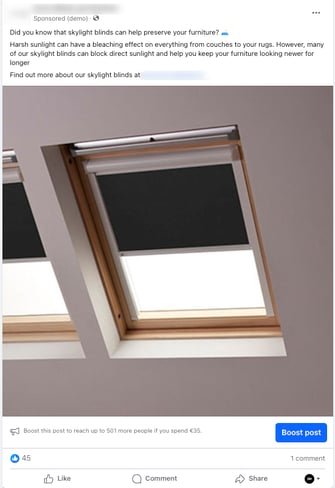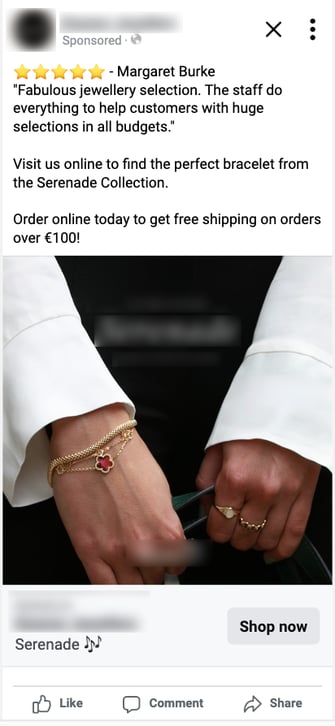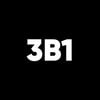Awareness, Consideration & Purchase
If you've run your own campaigns before you will know that Meta Ads can be a bit of a minefield. Without the proper structure in place, it's almost impossible to generate consistent sales at a positive ROI.
The Awareness, Consideration and Purchase strategy is one that we use at 3B1 all the time for our ecommerce clients.
The goal of this 3-pronged strategy is to bring someone from a cold state where they don't know your business even exists, to a hot state where they trust your brand enough to make a purchase.
Awareness
Firstly, use an awareness ad to introduce yourself to your potential customers. It shouldn't include any hard sell and should offer them some value. Some good examples are videos or blog posts that either entertain or solve a problem for your customer. .png?width=335&height=596&name=awareness%20ad%20(1).png)
In this awareness ad, we created a short video for our client where he went through the different types of go-karts that they have available and who they're best suited to. For example, some are suited to 2-3 year olds, some are more suited to 10 year olds, some work best on tarmac or on grass etc. We also wrote a follow-up blog going through everything in the video in more detail, we included the link in the ad to add more value to the end user.
Some good examples for targeting in this specific ad would be parents with children in the age ranges suitable for the individual go-karts or lookalike audiences of people who purchased a go-kart.
Potential customers were warmed up as we positioned our client as an expert in the field with the video and gave them some extra value with the detailed blog post.
Now that they have seen you, they are warmed up for the next stage.
Consideration
Consideration is the second stage of this strategy. This is when you have already offered some value and people are starting to get familiar with your brand. You still want to add some value at this stage but you also want to let your potential customers know you have what they need so that they consider purchasing from you.
You can do this in a number of ways. It's okay at this stage to do a post that has some sales language in it.
 This example is from one of our clients that sells skylight blinds online. You can see from the language that we're mostly being helpful, letting the user know that skylight blinds can stop fabrics on furniture from being bleached by the sun.
This example is from one of our clients that sells skylight blinds online. You can see from the language that we're mostly being helpful, letting the user know that skylight blinds can stop fabrics on furniture from being bleached by the sun.
Then at the bottom, we just have a simple CTA saying find out more about skylight blinds with a link to our client. So from that you can see we're still being helpful and we're adding a nudge to get the user to visit our website.
Strong CTA's like Order Online Now, Shop Now etc are fine to use here as well. What's really important is to include some kind of CTA with a link so that users can move on to the next stage in the funnel.
An idea for audience targeting here would be people who have watched 50% or more of a video in a post from the awareness stage. If you didn't use a video, but used a blog post, you could set up a remarketing list to target visitors to that specific blog post. If the audience isn't large enough to target, then you can add some more relevant blog pages to your list for remarketing. If they are on your blog, they're likely to be in the consideration stage.
If they click the link in your ad, then they will successfully move on to the next stage of the strategy.
Purchase
The final step in this strategy is the purchase stage. Some purchases can happen in the Awareness and Consideration stages, but this is where the vast majority of purchases happen in this strategy.
By now, you've made people aware of your company, you've warmed them up with some useful information and they should be ready to make a purchase.
This ad should be 100% focused on the product and selling. If you have discount codes available, give them away here. If you have free shipping over €50, mention it. If you have good reviews (either video or written), now's the time to add some social proof to try to get the sale over the line.
 In this example from a client who is a jeweller, we front-load the ad with social proof in the form of a testimonial immediately. In our tests, I've found adding in star emojis works better than ads without them, but feel free to play around with it.
In this example from a client who is a jeweller, we front-load the ad with social proof in the form of a testimonial immediately. In our tests, I've found adding in star emojis works better than ads without them, but feel free to play around with it.
Then there's a call to action (CTA), telling the user to visit us online to find the perfect bracelet.
This client doesn't use discount codes so we haven't added one, however, they do have free shipping on orders over €100 so that's mentioned as well.
Just a quick note, your CTA buttons should all be Shop Now at this stage. That's what I've found to work best for our clients, but again feel free to test out multiple CTA's to see what works best for you.
The audiences you would target with these ads would be visitors to specific product or collection pages, people who added to cart but didn't convert or people who initiated checkout but didn't convert. If you're starting out and those audiences aren't large enough to target yet, you can also target All Visitors over the last 30 days. You won't be able to get as specific that way, but it can still generate a great return.
Important note: In all of your targeting, make sure you exclude purchasers for the last 30 days. You don't want to be wasting ad spend on people who have purchased from you so recently.
Want to learn more? Follow me on LinkedIn or follow 3B1 on YouTube for regular insights and strategies.
Written by Christian Donovan, Director of Performance Marketing at 3B1.
